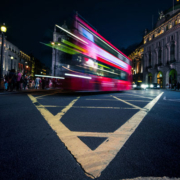Posts
The Hierarchy of Compositional Elements in Photography
/in Blogs, tips and tricks /by #iamdpcAs photographers, we are storytellers, using the language of visual elements to translate the three-dimensional world onto a two-dimensional plane. Understanding the art of composition is crucial to capturing compelling images that narrate our unique perspective of the world. It’s like arranging the notes of a melody to create a harmonious song.

However, the concept of an “order” to follow when considering the elements of composition isn’t carved in stone. Each scene, each subject, and each moment brings unique aspects that might prompt us to prioritize one compositional element over another. But for the sake of learning and practicing, it’s helpful to establish a guideline or a hierarchy of these elements. Let’s break down the sequence of considerations you might follow when composing a shot.
1. Vision and Intent
Before delving into the technical aspects of composition, start with the question: “What is my intent with this photograph?” Your vision is the driving force behind your composition. Do you want to highlight a certain emotion, convey a story, or just capture the beauty of the scene? Understanding your purpose will guide your use of compositional elements.
2. Framing and Placement of the Subject
Once you’re clear on your intent, consider the placement of your subject within the frame. The Rule of Thirds is a widely accepted principle to guide this step. The idea is to divide the frame into nine equal parts with two equally spaced horizontal and vertical lines, then place the key elements of your scene along these lines, or at their intersections.
3. Use of Leading Lines
Leading lines are a powerful tool to guide the viewer’s eye towards the subject or a point of interest. These lines can be anything – a pathway, a stream, architectural elements, or even a gaze. The key is to identify these lines in your scene and align your shot to leverage them.
4. Depth and Perspective
Creating a sense of depth adds dimension and realism to your photographs. Play with elements like foreground, middle ground, and background. Use perspective and depth of field to create a three-dimensional effect in a two-dimensional medium.
5. Balance and Symmetry
Ensure that your image feels balanced, which can be achieved both symmetrically and asymmetrically. Symmetry provides a sense of harmony and proportion, while asymmetry, when balanced correctly, can make your image more dynamic and interesting.
6. Patterns and Textures
Patterns and textures can add a rich layer of depth to your photographs. They can either be the subject itself or complement the primary subject. Patterns provide a sense of rhythm, while textures can evoke tactile sensations making the image more immersive.
7. Lighting and Shadows
Lighting is not just an illuminator, but a storyteller. It can dramatically change the mood, texture, and tone of your photograph. The interplay of light and shadow is crucial for highlighting your subject, creating depth, and revealing textures.
8. Color and Contrast
Lastly, consider the color scheme and contrast. Colors can evoke emotional responses and set the mood. Contrast, on the other hand, can draw attention to your subject, guide the viewer’s eye, and add drama to your image.
Remember, while this hierarchy can be a helpful guide, it’s not a set of rigid rules. Composition is as much about intuition and personal style as it is about guidelines. The more you shoot, the more you develop an instinct for composing impactful images. So grab your camera, and let the world be your canvas!
Rain, Reflections, and the City: Urban Photography on Wet Days
/in Uncategorized /by #iamdpcOften seen as an inconvenience, rainy days can in fact be a goldmine for photography enthusiasts, particularly those who love to capture urban landscapes. With the right techniques, what could be a gloomy, wet day transforms into a playground of vibrant reflections, textures, and strikingly beautiful scenes. Here are some essential tips to make the most of your rainy day urban photography:

1. Gear Up
First and foremost, protecting your camera gear is a priority. There are many weather-sealed camera bodies and lenses available on the market, but if you don’t own one, don’t worry. A rain cover for your camera will do just fine and is usually quite affordable. For a makeshift solution, even a plastic bag can be useful, provided you handle your equipment carefully. Don’t forget an umbrella or a waterproof jacket to keep yourself dry and comfortable.
2. Embrace Reflections
One of the most spectacular things about photography on a rainy day is the appearance of reflections. Wet surfaces, puddles, and glass panes become mirrors reflecting the city’s life in a different perspective. Reflections can bring a surreal and artistic touch to your photos. Look for those perfect puddles and use them to create a dramatic impact by including city structures, lights, and even pedestrians.
3. Look for Details
Rain transforms the ordinary into the extraordinary. Raindrops on a railing, wet footprints on the pavement, beads of water on a café window – these details may seem mundane but can add depth to your photography. Focusing on these minute details can give your viewers a fresh perspective on the familiar urban environment.

4. Play With Light
Rainy days might seem dark and gloomy, but they are filled with unique lighting opportunities. The overcast sky acts as a giant diffuser, providing a soft, even light that’s perfect for capturing the city’s character. The vibrant city lights become even more pronounced in the rain, especially at dusk or night. The contrasting lights and the dark environment create high drama and ambiance in your images.
5. Capture Movement
The hustle-bustle of the city is amplified on rainy days. People dashing with umbrellas, vehicles splashing water, raindrops trickling down window panes – these movements can add a dynamic touch to your photos. Using a slow shutter speed will let you play around with motion blur, conveying a sense of speed and urgency that aligns with the mood of a rainy day.
6. Experiment with Black and White
Black and white photography and rainy days make for a potent combination. It brings out the mood, contrasts, and textures in a more pronounced manner. Particularly in an urban setting, black and white can amplify the timeless character of the cityscape, making your photographs dramatic and intense.

7. Post-Processing
Finally, don’t forget the power of post-processing. You can enhance the moodiness of your rainy day pictures by adjusting the contrast, sharpness, and saturation. Experimenting with various filters can also highlight the different elements you’ve captured.
Rainy days offer a unique canvas for your urban photography. While the rest retreat indoors, it’s your chance to step out and explore the city from a refreshed and renewed perspective. Happy shooting!
Latest at DPC
we are here
Building No 5 D, Jungi House
Shahpur Jat, New Delhi
hi@delhiphotographyclub.com
91-8826712162
91-8800887166
We are open
Mon Sun: 11:00-19:00
Tuesday : closed
Facebook and online queries
Responded in 2 -8 Hours
Try Now.


